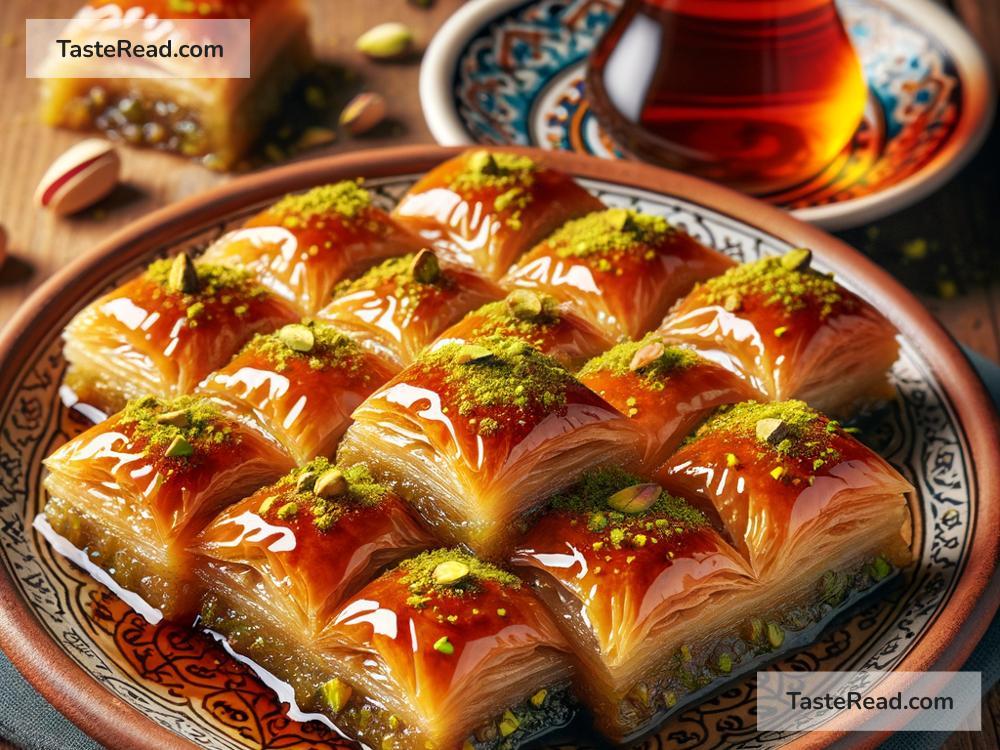The Influence of Turkish Baklava: A Sweet Slice of History
Baklava is one of the most beloved desserts in the world today, famous for its flaky layers of pastry, rich nuts, and sweet syrup. But did you know that baklava has a fascinating history rooted in Turkey? This delicious dessert has traveled across cultures and continents, influencing and adapting to the tastes of many. In this blog, we’ll explore how Turkish baklava evolved, spread, and left its mark on global cuisine.
The Origins of Baklava
The story of baklava begins hundreds of years ago in the heart of the Ottoman Empire, which ruled over modern-day Turkey and many surrounding regions. While the exact origins of baklava are debated, historians agree that it became popular in the Ottoman courts during the 15th century.
Turkey is often regarded as the cradle of baklava because the Ottoman chefs refined its recipe to perfection. They transformed it from a simple dessert to an art form, using thin sheets of dough (known as phyllo) layered with finely chopped nuts. The pastry was then baked and finished with a drizzle of golden syrup or fragrant honey.
In Turkey, baklava became synonymous with celebration and wealth. It wasn’t just a dessert – it represented hospitality, tradition, and artistry. It was shared during holidays, weddings, and special occasions, a sweet treat that brought people together.
Turkish Baklava: A Unique Identity
Turkish baklava stands out from other versions of baklava because of how it is made and the ingredients used. One of its most famous features is the use of pistachios from Gaziantep, a city in southeastern Turkey known for producing some of the finest pistachios in the world. These bright green nuts give Turkish baklava its signature flavor and color.
Another unique characteristic is the use of clarified butter, which adds richness to the delicate layers of phyllo dough. Turkish baklava also uses sugar syrup instead of honey, offering a cleaner, lighter sweetness that enhances the flavor of the nuts and pastry rather than overpowering them.
Master baklava makers in Turkey take great pride in their craft. The dough must be rolled thinner than paper, requiring years of skill and patience to master. The layering technique and syrup drizzle must be perfectly balanced to ensure a crispy, soft, and flavorful bite.
Baklava Travels the Globe
Thanks to trade routes and the expansion of the Ottoman Empire, Turkish baklava began to spread far and wide. As it traveled to different regions, it influenced other cuisines and evolved to suit local tastes.
In Greece, baklava was adapted by adding cinnamon and cloves, and often using walnuts instead of pistachios. In the Middle East, baklava took on more floral flavors, like rose water and orange blossom. In Armenia and the Balkans, different versions popped up, sometimes using simpler dough or regional nuts.
Turkey played a central role in connecting these diverse regions, both geographically and culturally. Over time, baklava became a common thread that united people, showing how food can transcend borders and become a shared experience.
Baklava’s Modern Influence
Today, Turkish baklava continues to influence global cuisine in surprising ways. In Turkey, it is still treated with respect as a cultural icon. Many families pass down their baklava recipes for generations, and Turkish baklava shops are dedicated to preserving traditional methods.
Outside of Turkey, baklava has inspired new desserts and fusion dishes. Chefs around the world have incorporated baklava flavors into ice creams, cheesecakes, and even non-traditional pastries. The timeless combination of crispy dough, nuts, and syrup has proven to be endlessly adaptable.
Baklava is also a symbol of cultural exchange and diversity. Whether you visit Turkey or enjoy baklava in your home country, eating this dessert is like taking a small bite of history. It reminds us of the interconnected past we all share as humans, where food is a vehicle for storytelling and tradition.
Baklava as a Cultural Ambassador
Turkish baklava is not just a dessert – it’s a cultural ambassador. When people think of Turkey, they often picture golden trays of baklava served with steaming cups of Turkish tea. It’s a sweet way to introduce Turkish history, hospitality, and flavors to new audiences.
In fact, baklava has become increasingly popular worldwide, with Turkish restaurants and bakeries showcasing it as a star dessert. Tourists visiting Turkey often buy boxes of baklava to bring home, spreading Turkish culture through this delicious treat.
Events like Baklava festivals also celebrate the shared heritage of this dessert. By highlighting baklava’s roots, such occasions remind us how much we have in common, even in our differences.
Conclusion: A Timeless Treat
Turkish baklava is more than just a dessert – it’s a piece of history that spans continents and generations. From the Ottoman palaces to modern kitchens worldwide, baklava has evolved into a universal language of sweetness. Its influence can be seen in how it connects people, inspires other foods, and continues to be a source of pride in Turkish culture.
So next time you enjoy a piece of baklava, take a moment to think about the journey that brought it to your plate. This flaky, nutty, syrupy treasure is not just a treat for your taste buds; it’s a gift from Turkey to the world.


